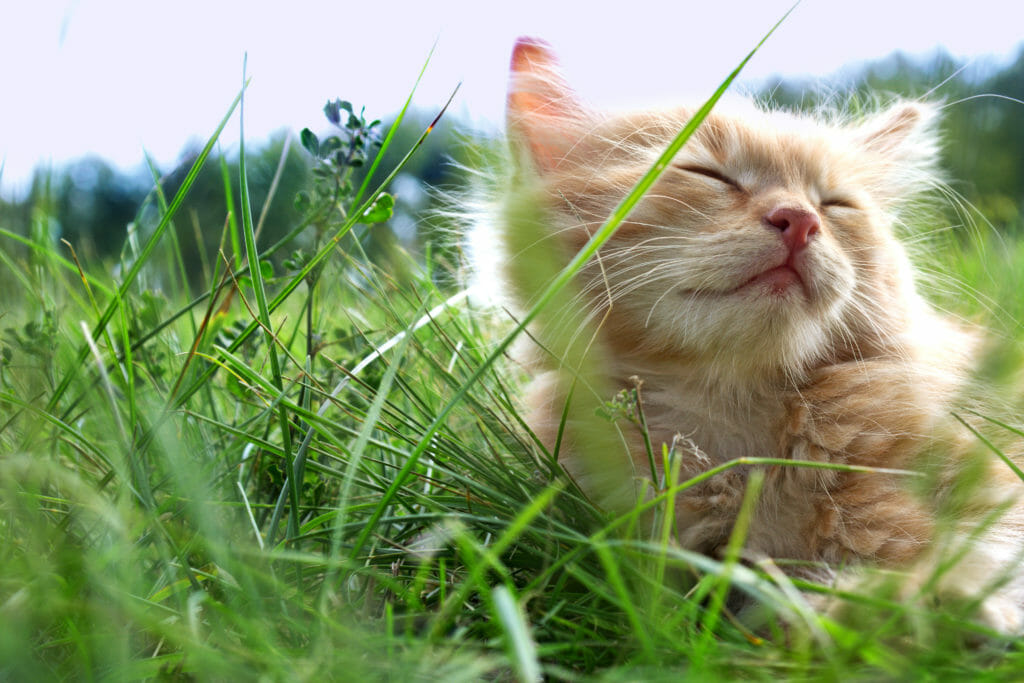Prescription diets targeted for pets with urinary conditions such as FLUTD (Feline Lower Urinary Tract Disease), idiopathic cystitis (regular bladder inflammation of no known cause), and urinary crystals or stones have specific mechanisms of action to dissolve urinary crystals and prevent urinary stones. When we give a pet two different brands of prescription food, it ends up reducing the effect of both diets and leaving the pet at risk for a recurrence of stones/crystals.
Royal Canin Urinary S/O works by diluting the urine to help drive struvites to stay in their dissolved states instead of combining in the urine into crystals or stones. Urinary S/O is high in sodium to signal the kidneys to excrete the extra sodium, which in turn causes the kidneys to excrete more water into the urine, leading to dilution. This action also signals the pet’s brain to drink more. Working this way in the body, it helps maintain a low urine specific gravity (USG). Urinary S/O works best when given as canned food or with the animal encouraged to drink as much water as possible to aid in dilution. Other benefits of this diet include limiting the number of minerals that combine to make up stones and crystals, controlling the pH of the urine and working to both prevent and dissolve existing crystals/stones.
Hill’s C/D also works to control the pH of the urine and the quantities of certain minerals that contribute to the production of struvites and calcium oxalates. Phosphorus and magnesium, for example, are controlled as they are the building block for struvites and calcium for calcium oxalates. It helps to maintain the urine pH to be between 6.2-6.4, which is acidic enough to dissolve struvites but also an ideal level to prevent oxalate formation.
Hill’s C/D has added Omega-3s and antioxidants to reduce inflammation. Potassium citrate is also found in this diet to help bind excess calcium in the urine, which is how it helps prevent calcium from forming into calcium oxalates. It is why Hill’s C/D is typically the brand recommended for calcium oxalates, as it is formulated for dissolution and prevention.
The Hill’s diet S/D is a dissolution diet, which works to aggressively reduce struvites, keeping the pH level down to 5.9-6.1. It is not recommended as a long term diet as this causes the urine to be too acidic to prevent calcium oxalates. Often this will be prescribed to help aid in getting the pet cleared of struvites before putting them on a long term urinary diet such as the ones listed above.
Purina UR works similarly to Royal Canin, where it is designed to dilute the urine. The main difference between UR and Royal Canin is that UR has less sodium, more protein, and can be used for weight loss. It comes in a Savory Selects version (gravy and chunks) that has the highest protein, lowest carbs and lowest fat in a urinary diet on the market. Meaning that this diet is best for pets who are borderline overweight or are obese.
When you mix Royal Canin Urinary S/O or Purina UR with Hill’s C/D, the overall concentration of sodium is decreased, which interferes with the dilution process. It also means there is an increase in phosphorus, calcium and magnesium (as these are not in the same amounts in RC and Purina that they are in the Hill’s brand). The minerals that are the building blocks for the stones are not at the desired levels. Mixing the products does not allow for control of the urine’s pH, meaning it is not at a specific level to counteract the development of future stones or crystals.
All scientific studies done on these diets have been performed with the pet eating solely the particular brand of the diet and at those times have been proven to work effectively. Due to this, to guarantee this effectiveness, we have to follow the same guidelines set during these studies, aka feed only the one brand diet. There has not yet been a study testing if there is the same or similar level of effectiveness when mixing. The safest option is to stick to a single brand or switch over entirely to another brand if the pet gets tired of or disinterested in the particular food being offered.
Written by: Tracey Westhaver, Reception Manager




